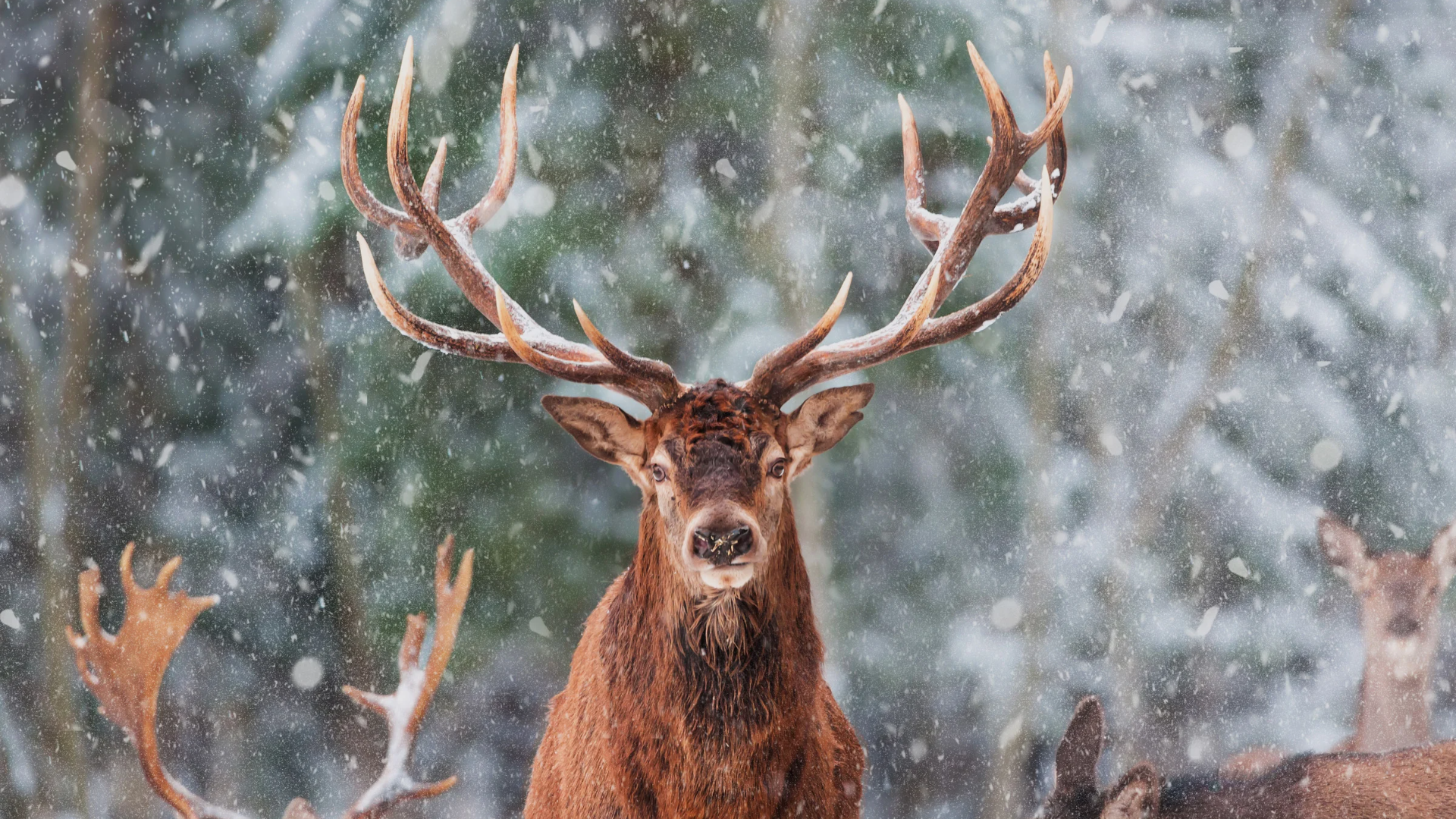Reindeer and caribou are actually the same species of animal, however, they are referred to as reindeer in Europe and caribou in North America. These animals are native to the Arctic regions of Europe, Asia, and North America, and they are well-adapted to life in this cold environment. Reindeer have thick fur coats that keep them warm in the winter, and their wide hooves act like snowshoes, helping them to move across the snow-covered ground. These animals are also excellent swimmers, and they often cross rivers and lakes in search of food. In addition to their coat and hooves, reindeer also have special adaptations that allow them to see ultraviolet light. This is helpful in the winter when there is little sunlight and helps them to find food that is hidden under the snow.
Both male and female reindeer grow antlers. However, the males shed their antlers every year, while the females only shed theirs after giving birth. Reindeer are the only deer species in which both sexes grow antlers. During the winter months, the reindeer coat grows thicker and changes from brown to white. This change provides camouflage from predators.
What do reindeer eat?
Reindeer are well-adapted to living in the frozen tundra. Their hooves are large and spongy, providing traction on the ice, and their thick fur helps to insulate them from the cold. Reindeer also have a special adaptation that allows them to see ultraviolet light, which helps them to find food in the snow. During the winter months, reindeer feed on a variety of plants, including mosses, lichens, and shrubs. In addition, they will sometimes dig through the snow to find hidden seeds and berries. During the summer months, their diet expands to include flowers, leaves, and insects. As a result of their varied diet, reindeer are able to obtain all the nutrients they need to survive in the harsh conditions of the tundra.
How do reindeer migrate
Reindeer are capable of running at speeds of 60 to 80 kilometers per hour (37 to 50 miles per hour). They can maintain this speed for a considerable distance, making them one of the fastest land mammals. Reindeer can also swim. They have been observed crossing large bodies of water, such as Lake Superior and the Gulf of Finland. Migration is thought to help reindeer survive the harsh winter conditions in their habitat by giving them access to more food resources. Reindeer migrate by moving from one place to another in search of food. Depending on the season, they may move between their summer and winter ranges, or between their calving grounds and their winter ranges. The longest recorded migration was undertaken by a female reindeer named Willow, who traveled 3,200 kilometers (2,000 miles) from Norway to Scotland in just under two months. Migration is a demanding process that requires careful planning and preparation. Reindeer must build up their body fat reserves before undertaking a long journey, and they must be able to find enough food along the way to sustain themselves. Migration also poses a number of risks, such as predation and exhaustion. Despite these challenges, migration is an essential part of the reindeer’s life cycle and helps to ensure their survival in a changing environment.
What are reindeer cyclones?
Reindeer cyclones are formed to make it hard for predators to target any of the reindeer. Reindeer cyclones have been documented as far back as the Viking period with reindeer forming cyclones to make it harder for hunters to target any of the reindeer. The cyclones form around weaker members of the herd as a way to protect them. Many animal species have a similar defense strategy.
Sources
Barefield, R. (2021). Kodiak Island Wildlife: Biology and Behavior of the Wild Animals of Alaska’s Emerald Isle. United Kingdom: Publication Consultants.
Reindeer cyclone. PBS SoCal. (n.d.). Retrieved December 20, 2022, from https://www.pbssocal.org/shows/nature/clip/reindeer-cyclone-nqrbod


